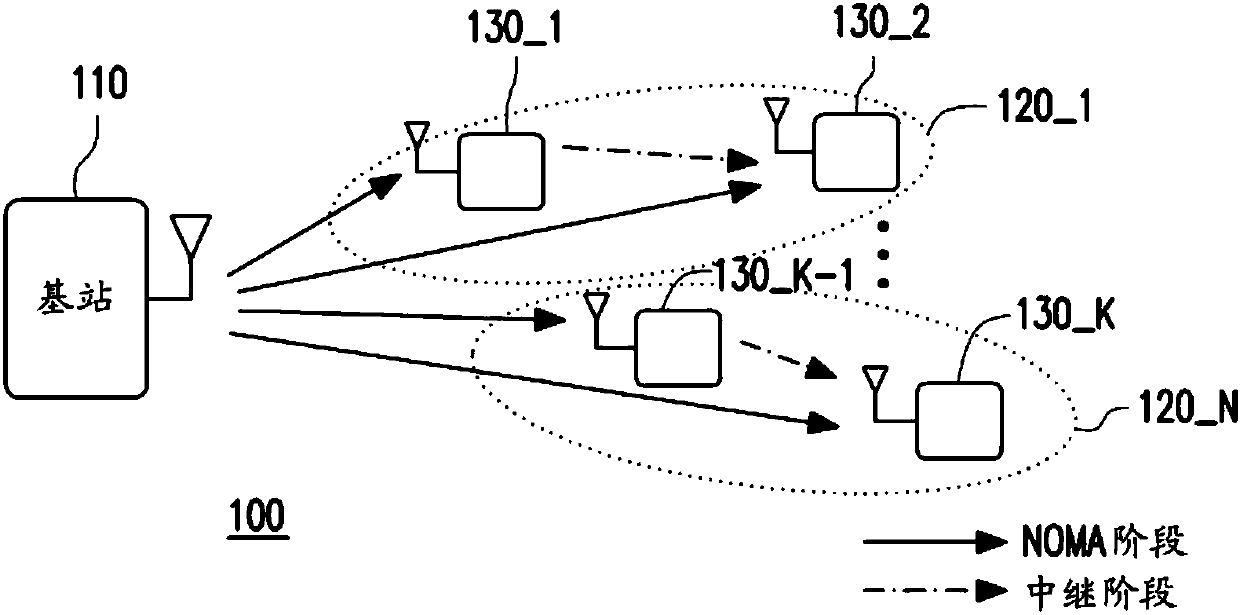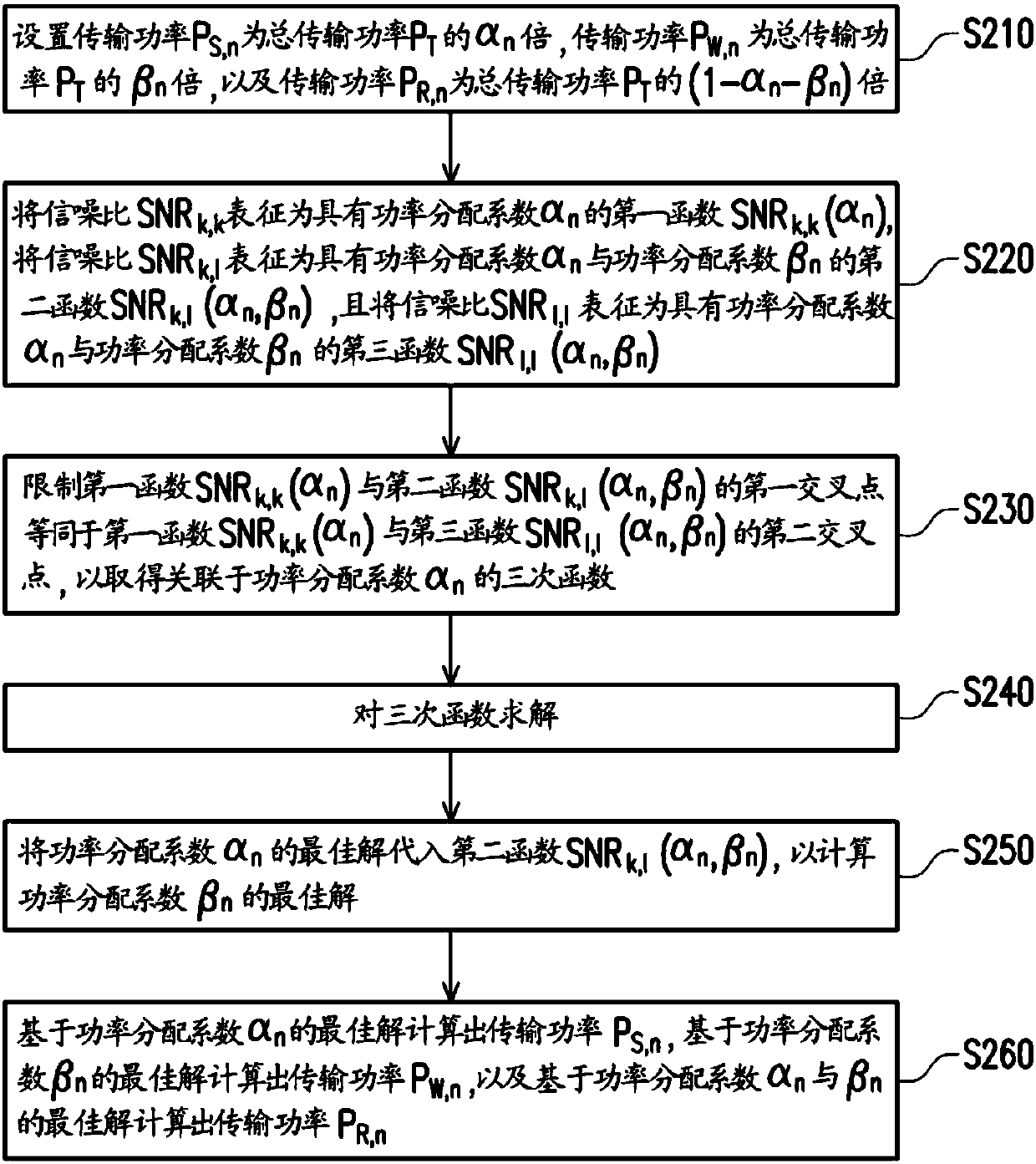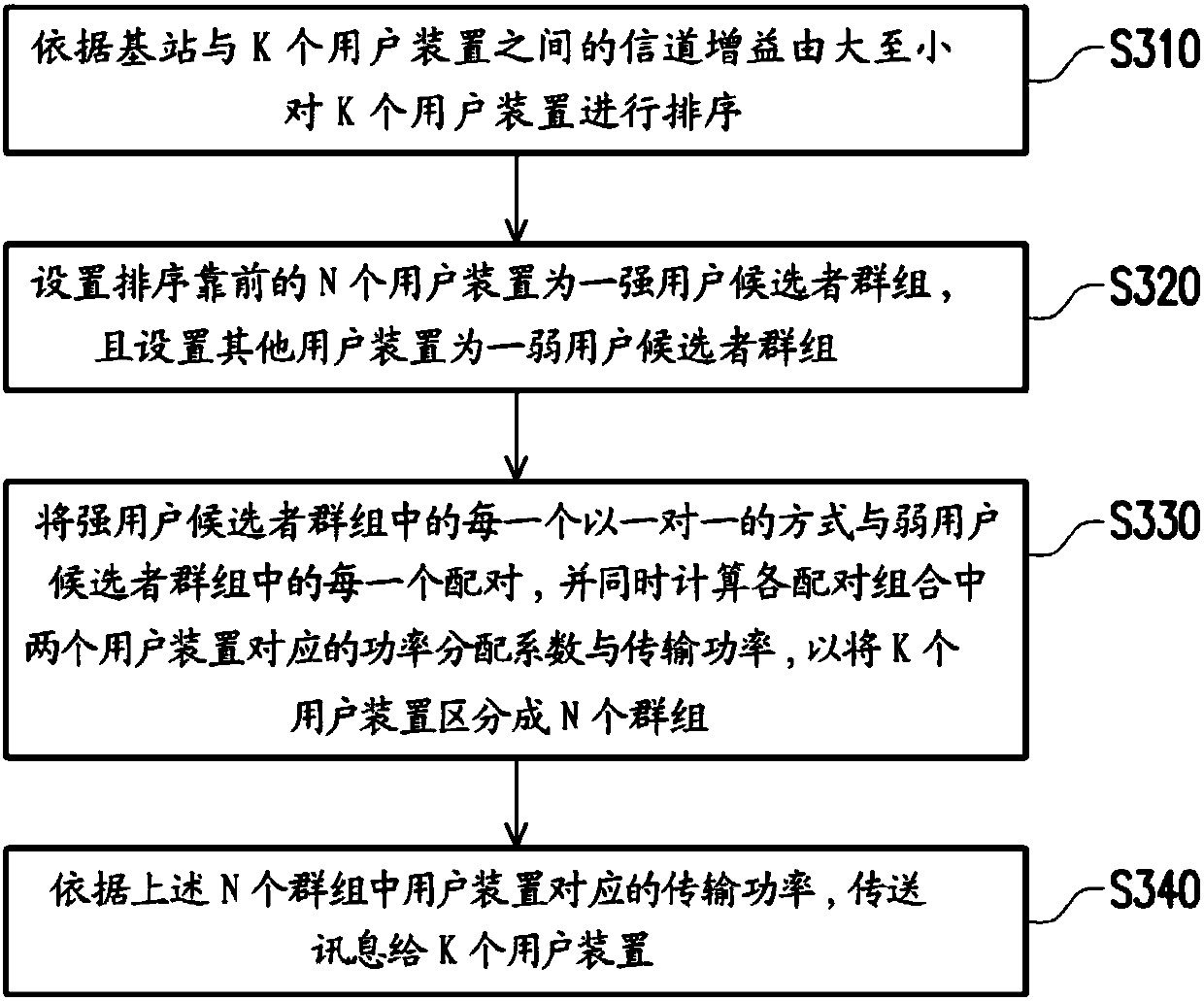Joint user grouping and power distribution method and base station using same
A technology of user grouping and allocation method, applied in power management, broadcast service allocation, wireless communication, etc., can solve the problem of no proposed user grouping algorithm, and achieve the effect of reducing complexity, improving transmission efficiency, and improving system capacity
- Summary
- Abstract
- Description
- Claims
- Application Information
AI Technical Summary
Problems solved by technology
Method used
Image
Examples
Embodiment Construction
[0032] figure 1 It is a schematic diagram of a downlink cooperative NOMA system drawn according to an embodiment of the present invention. In an embodiment of the present invention, the downlink cooperative NOMA system 100 includes a base station 110 and K user equipments that will be divided into N groups (ie, groups 120_1, . . . , 120_N and user equipments 130_1, 130_2, . . . , 130_K-1, 130_K), wherein different groups are assigned orthogonal resources, and each group includes two user equipments sharing the same channel resource. Therefore, the number K of user equipments in the downlink cooperative NOMA system 100 is an even number greater than or equal to 2 (ie, K≧2 and K is an even number), and N=K / 2.
[0033] In addition, in practical applications, the base station 110 and the user equipment 130_1, 130_2, ..., 130_K-1, 130_K may be configured with N T and N R antennas to form a multiple-input multiple-output NOMA (MIMO-NOMA) downlink system 100, where N T and N R I...
PUM
 Login to View More
Login to View More Abstract
Description
Claims
Application Information
 Login to View More
Login to View More - R&D
- Intellectual Property
- Life Sciences
- Materials
- Tech Scout
- Unparalleled Data Quality
- Higher Quality Content
- 60% Fewer Hallucinations
Browse by: Latest US Patents, China's latest patents, Technical Efficacy Thesaurus, Application Domain, Technology Topic, Popular Technical Reports.
© 2025 PatSnap. All rights reserved.Legal|Privacy policy|Modern Slavery Act Transparency Statement|Sitemap|About US| Contact US: help@patsnap.com



